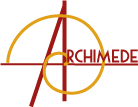Abstract
Scholars brought to Jerusalem by Herod project the picture of a literate king, whose court was the focal point of Jewish, Greek and Roman cultures. This pluralism is first attested by the cultural buildings, theatres and libraries, Herod built in his kingdom. Then, a prosopographical investigation of the royal circle indicates a transfer of part of Alexandrian Judaism to Jerusalem. The court of Judea was bright enough to attract intellectuals from the whole Greco-Roman world, as the king had made the choice of Mediterranean openness. The creation of a diplomatic corps, made up of Greco-Roman intellectuals in the service of the Herodian monarchy, brings out this cultural mix.
Keywords: Libraries, Embassies, Herod, Jerusalem, Alexandrian Judaism, Multiculturalism, Prosopography, Theatres, Cultural transfers.




